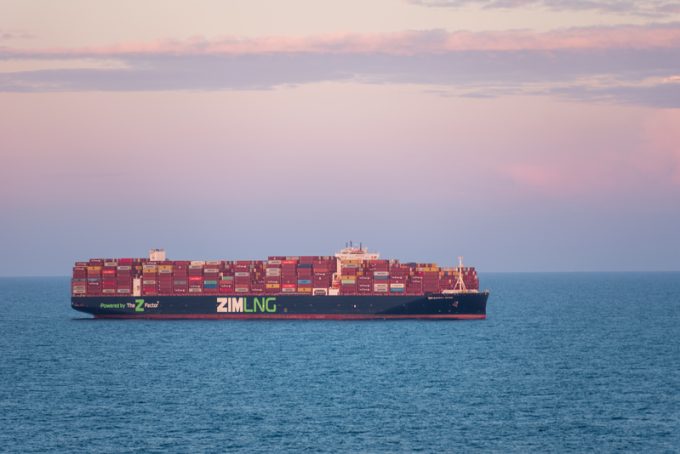CMA CGM calls for 'fair rules' on future fuels, as it leans towards LNG
Mainline operators appear to have shifted their focus away from methanol as a future fuel, ...
CHRW: DOWN AND RIGHTLY SOXOM: SOLID AAPL: SUPPLY CHAIN PLANNING AAPL: INVENTORY FOCUSWMT: RESHORINGUPS: THE HANGOVERUPS: PRICING AMAZON RISKGXO: LUXURY PARTNERSHIP EXTENDEDUPS: SCS PERFORMANCEUPS: EFFICIENCY SOUGHTUPS: CHANGESUPS: OUTLOOKUPS: EARNINGS BEATTSLA: CFO ON TARIFFSTSLA: INVENTORY FOCUSUPS: TRADING UPDATE OUT SOONCHRW: NO SIGNS OF INFLECTION CHRW: EARNINGS BEAT
CHRW: DOWN AND RIGHTLY SOXOM: SOLID AAPL: SUPPLY CHAIN PLANNING AAPL: INVENTORY FOCUSWMT: RESHORINGUPS: THE HANGOVERUPS: PRICING AMAZON RISKGXO: LUXURY PARTNERSHIP EXTENDEDUPS: SCS PERFORMANCEUPS: EFFICIENCY SOUGHTUPS: CHANGESUPS: OUTLOOKUPS: EARNINGS BEATTSLA: CFO ON TARIFFSTSLA: INVENTORY FOCUSUPS: TRADING UPDATE OUT SOONCHRW: NO SIGNS OF INFLECTION CHRW: EARNINGS BEAT

Zim is leaning into its green credentials and betting big on LNG, following a third quarter that beat the expectations of Wall Street.
Over the 2023-2024 period, the Israeli carrier expects to have taken delivery of 46 newbuild vessels – 42 received already – of which 28 will be LNG-fuelled. Chief financial officer Xavier Destriau told The Loadstar this left the carrier in a unique position.
“Once all 46 vessels are delivered, Zim’s operated capacity will be 50% newbuild and 40% LNG-powered – a unique commercial position,” he said.
“As an early adaptor of LNG, Zim is the only carrier to operate two services on the Asia to USEC trade with LNG capacity. This is a commercial differentiator and has helped us grow our volume on this trade as we increased our operated capacity.”
Due to a higher energy density per tonne sold, LNG is approximately 16% cheaper than low-sulphur fuel oil (LSFO) equivalents, which has seen sales diminish in recent months.
One source in the charter market told The Loadstar Zim’s strong showing over the three months to October was, in part, driven by this shift to LNG, with the source noting that it had occurred in a period in which prices for the fuel had remained low.
“By default, it seems to have become the ‘green’ choice – albeit that it’s not so green – of the major lines,” the source added.
Asked for thoughts on the carrier’s recent results, the source noted that, with 65% on spots and “just 35%” covered by contracts, Zim had positioned itself as the “exact opposite” of other major players.
“As a consequence, it has cleaned up in a high-demand/tight supply situation, and for Q4, Zim sees spot rates staying strong. This is due to the threats of tariffs, strikes and the early CNY.
“The Houthis have helped Zim out massively as their new ships were delivered with old expensive chartered ships still with time remaining, which they were able to utilise.”
It was a case, the source continued, of “lucky old Zim” again, but this sense of luck was in part down to a strategy the carrier had grown accustomed to.
The source added: “It could be said that Zim makes its own luck with its strategy of deploying and redeploying ships onto the most lucrative trades and being prepared to take risks on its spot rate policy.”
Mr Destriau said the Zim team now believed they “have the right fleet to execute our commercial strategy and, at this time, we are actually not looking to grow our fleet further”.
He added: “In fact, in 2025 and 2026, Zim regains flexibility in terms of its operated capacity. We have 57 vessels up for renewal, giving us the option to continue operating similar capacity or scale down if market conditions deteriorate.”
The News in Brief Podcast gives you a 15 minute overview of last week’s supply-chain news and a look into what’s coming up this week!
Audio Player
Comment on this article